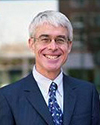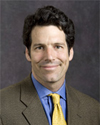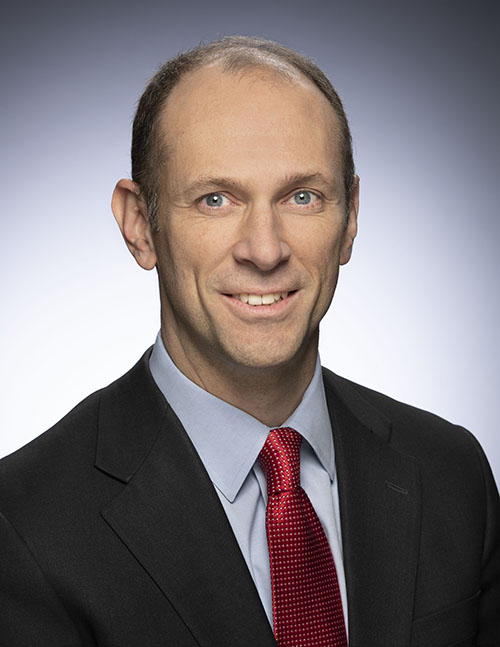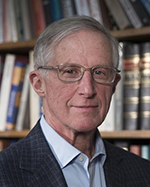Raising the top federal marginal tax on earned personal income to 70% (and holding the rest of the current tax code, including the top bracket definition, fixed) would raise substantially more revenue (federal and state, combined) without lowering economic activity.
Responses
© 2025. Kent A. Clark Center for Global Markets.
9%
5%
7%
42%
19%
16%
2%
Responses weighted by each expert's confidence
© 2025. Kent A. Clark Center for Global Markets.
11%
52%
17%
17%
4%
Participant |
University |
Vote |
Confidence |
Bio/Vote History |
|---|---|---|---|---|
 Daron Acemoglu |
MIT | Bio/Vote History | ||
|
It will increase substantial revenue. Impact on economic activity is somewhat uncertain, but probably not huge, except through tax avoidance
|
||||
 Alberto Alesina |
Harvard | Did Not Answer | Bio/Vote History | |
|
|
||||
 Joseph Altonji |
Yale | Bio/Vote History | ||
|
Some increase in revenue but substantial tax avoidance. Modest drop in output due to lab. supply response and tax avoidance.
|
||||
 Alan Auerbach |
Berkeley | Bio/Vote History | ||
|
|
||||
 David Autor |
MIT | Bio/Vote History | ||
|
Not my area, but no clear evidence that historically high U.S. marginal tax rates reduced economic activity -- though they raised revenue.
|
||||
 Katherine Baicker |
University of Chicago | Bio/Vote History | ||
|
|
||||
 Abhijit Banerjee |
MIT | Bio/Vote History | ||
|
|
||||
 Marianne Bertrand |
Chicago | Bio/Vote History | ||
|
|
||||
 Markus Brunnermeier |
Princeton | Bio/Vote History | ||
|
|
||||
 Raj Chetty |
Harvard | Bio/Vote History | ||
|
|
||||
 Judith Chevalier |
Yale | Bio/Vote History | ||
|
If Rawls rev max optimal tax is ~70%, that derives from a model in which there is SOME elasticity of economic activity to the tax rate.
-see background information here |
||||
 David Cutler |
Harvard | Bio/Vote History | ||
|
|
||||
 Angus Deaton |
Princeton | Bio/Vote History | ||
|
|
||||
 Darrell Duffie |
Stanford | Bio/Vote History | ||
|
More revenue: yes. But there would be at least a small decline in activity from the reduced after-tax incentives.
|
||||
 Aaron Edlin |
Berkeley | Bio/Vote History | ||
|
|
||||
 Barry Eichengreen |
Berkeley | Bio/Vote History | ||
|
I imagine a modest negative impact on activity, given that this would be on top of S&L taxes. But Diamond-Saez & Jones studies disagree...
|
||||
 Liran Einav |
Stanford | Bio/Vote History | ||
|
|
||||
 Ray Fair |
Yale | Bio/Vote History | ||
|
The MPC out of after tax income is not likely to be exactly zero for people in the top bracket.
|
||||
 Amy Finkelstein |
MIT | Bio/Vote History | ||
|
|
||||
 Pinelopi Goldberg |
Yale | Did Not Answer | Bio/Vote History | |
|
|
||||
 Austan Goolsbee |
Chicago | Bio/Vote History | ||
|
Revenue, yes, but with lots of DWL
|
||||
 Michael Greenstone |
University of Chicago | Bio/Vote History | ||
|
|
||||
|
Robert Hall |
Stanford | Bio/Vote History | ||
|
I think it would raise more revenue but would reduce output
|
||||
 Oliver Hart |
Harvard | Bio/Vote History | ||
|
Revenue would rise, but whether by a lot is unclear because there are many tax loop-holes. I would expect some small disincentive effects.
|
||||
 Bengt Holmström |
MIT | Bio/Vote History | ||
|
|
||||
 Caroline Hoxby |
Stanford | Bio/Vote History | ||
|
While the evidence from ERTA(1981) & TRA(1986) is not definitive, it--broadly speaking--suggests the opposite: i.e. tax revenue would fall.
|
||||
 Hilary Hoynes |
Berkeley | Bio/Vote History | ||
|
I dont love the wording of this question particularly "without lowering economic activity".
|
||||
 Kenneth Judd |
Stanford | Bio/Vote History | ||
|
Revenue may be higher, but the impact on output would be substantial. E.g., many will convert earned income to perks or capital gains.
|
||||
 Steven Kaplan |
Chicago Booth | Bio/Vote History | ||
|
|
||||
 Anil Kashyap |
Chicago Booth | Bio/Vote History | ||
|
It will likely raise revenue but also trigger relabeling of income to avoid the tax and reduce some activity. magnitudes hard to tell
|
||||
 Pete Klenow |
Stanford | Bio/Vote History | ||
 Jonathan Levin |
Stanford | Did Not Answer | Bio/Vote History | |
|
|
||||
 Eric Maskin |
Harvard | Bio/Vote History | ||
|
If the assertion had read "...without lowering economic activity MUCH" I would have agreed. But ZERO decline in activity seems implausible.
|
||||
 William Nordhaus |
Yale | Bio/Vote History | ||
|
Would induce severe distortions from different tax rates earned v other income, and worse in NY, CA.... Net revenue hard to determine.
|
||||
 Emmanuel Saez |
Berkeley | Bio/Vote History | ||
|
|
||||
 Larry Samuelson |
Yale | Bio/Vote History | ||
|
Some increase in top rate would raise revenue with minimal effects on economic activity; it's less clear how high one could raise the rate.
|
||||
 José Scheinkman |
Columbia University | Bio/Vote History | ||
|
|
||||
 Richard Schmalensee |
MIT | Bio/Vote History | ||
|
Nobody proposes such drastic changes with current brackets; it would have serious adverse effects.
|
||||
 Carl Shapiro |
Berkeley | Did Not Answer | Bio/Vote History | |
|
|
||||
 Robert Shimer |
University of Chicago | Bio/Vote History | ||
|
Total tax rate would exceed 85% in many states. This is surely on the wrong side of the Laffer curve, especially in the long run
-see background information here -see background information here |
||||
 James Stock |
Harvard | Bio/Vote History | ||
|
|
||||
 Richard Thaler |
Chicago Booth | Bio/Vote History | ||
|
Why this question? AOC proposed 70% rate on income > $10M. This is a non-starter, and for good reasons like shifting income to cap gains.
|
||||
 Christopher Udry |
Northwestern | Bio/Vote History | ||
|
Not happy with Q. Raising top rate w/o other changes not best approach. Would raise substantial revenue, but some cost in gdp in short run.
|
||||

